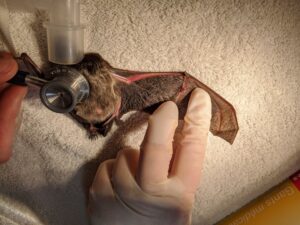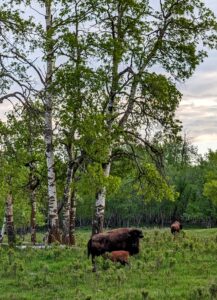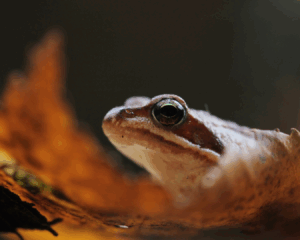What is biodiversity?
Biodiversity can be defined as the variability of all living organisms in all ecosystems (including terrestrial, marine, etc.) and the ecological functions and complexes that they contribute to (UN 1992, WWF) (fig.1).
The term was coined from the field of conservation biology, during the “National Forum of Biodiversity” in 1985, and the subsequent book, The Diversity of Life (Wilson, E.O. 1992) to draw attention to the increased number of species becoming extinct due to human interference. However, as pointed out in What is Biodiversity? (Maclaurin, J & Sterelny, K.), biodiversity cannot accurately be measured by species count alone.
A better way of visualising it is as species richness, or what ecosystem functions and importance that each individual species provides to the ecosystem itself. Are they primary producers, do they provide habitat for other species, or do they provide natural resources?
A wide range of species that provide these essential ecosystem functions is necessary for the system to thrive, and if biodiversity (or the number of species providing these functions) is high, then the loss of one species may be dampened by the presence of similar species that provide similar functions.
Fig.1 Various ecosystem services and the sources that provide them (Source: WWF)
Why is biodiversity important to the environment?
Because every species in an ecosystem contributes in some way to its function, the greater the diversity of species, the less susceptible the ecosystem is to destabilization. There are many potential impacts on ecosystem function, ranging from natural (such as forest fires and floods) to man-made (such as deforestation and farming) and it is important to understand the effects of each on the individual species.
Examples of ecosystem functions that are important for the wider environment are the nitrogen cycle (fig.2), which is extremely important for plant life, and in turn, everything that depends on plant matter, pollination, necessary for the spread of flower and tree species, and soil formation processes that enable the growth of a larger range of species than is typically possible.
Fig.2: The nitrogen cycle is an example of an ecosystem function that depends on a wide variety of organisms (Source: Environmental Protection Agency, c/o Wikipedia).
Why is biodiversity important to us?
We may tend to think as humans being separate from the ecosystems they inhabit and contribute to, but this is not necessarily correct. A great deal of our success and wellbeing is owed to the many organisms that make up our greater environment.
Agricultural biodiversity, for example, is important in the foundation of crop development and food security, and the resilience to pests and natural disasters (UN CBD).
Medical research is also another reason why biodiversity is important. New species that provide medical benefits to humanity are discovered regularly, as was the case of the waxy monkey frog which was found to have several important peptides that it secretes from its skin and is currently being used to treat cancer patients (Eurekalert 2011).
Loss of biodiversity effects all aspects of the ecosystem, and the removal of certain species may form a domino effect, creating further loss both for humans as a species and the environment.
What can we do to preserve biodiversity?
As always, increasing public knowledge and understanding of the importance of biodiversity is a top priority when it comes to helping preserve it. If you are aware of an ecosystem or natural habitat that is vulnerable, leaving the area and animals (especially nesting sites) undisturbed is the best way to preserve biodiversity on the individual level (Naturetrust BC). Also, it’s important to participate in environmentally-friendly practices, such as recycling or reducing vehicular transportation, and reducing the use of products and materials that negatively impact the environment such as certain pesticides.
At a wider level, participating in park volunteer work and land stewardship is a great way to get involved in protecting our biodiversity, as well as getting in touch with local government if you have concerns about particular areas, environments, or species.
By Jonathan Poll, AIWC Volunteer
Sources
https://www.cbd.int/doc/health/cohab-policy-brief1-en.pdf
https://en.wikipedia.org/wiki/Nitrogen_cycle
https://www.eurekalert.org/pub_releases/2011-06/qub-sup060611.php
https://www.wwf.eu/what_we_do/biodiversity/
https://www.naturetrust.bc.ca/conserving-land/what-can-we-do








16 thoughts on “All About Biodiversity”
I’m truly enjoying the design and layout of your
website. It’s a very easy on the eyes which makes it much more pleasant for me to come here and visit more often. Did you hire out a designer to create
your theme? Fantastic work!
I just like the helpful information you provide in your articles
Great information shared.. really enjoyed reading this post thank you author for sharing this post .. appreciated
I like the efforts you have put in this, regards for all the great content.
Great information shared.. really enjoyed reading this post thank you author for sharing this post .. appreciated
I like the efforts you have put in this, regards for all the great content.
I just like the helpful information you provide in your articles
Great information shared.. really enjoyed reading this post thank you author for sharing this post .. appreciated
How can I learn more about it?
Check out the sources linked in the article for more information!
I like the efforts you have put in this, regards for all the great content.
I really enjoyed reading your post, especially because it addressed my issue. It helped me a lot and I hope it can help others too.
Thanks for your help and for posting this. It’s been wonderful.
Thank you for writing the article. I like the topic too.
Great information shared.. really enjoyed reading this post thank you author for sharing this post .. appreciated
Cool that really helps, thank you.